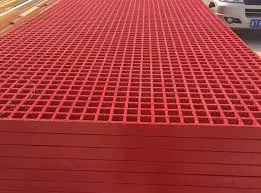
-
 Afrikaans
Afrikaans -
 Albanian
Albanian -
 Amharic
Amharic -
 Arabic
Arabic -
 Armenian
Armenian -
 Azerbaijani
Azerbaijani -
 Basque
Basque -
 Belarusian
Belarusian -
 Bengali
Bengali -
 Bosnian
Bosnian -
 Bulgarian
Bulgarian -
 Catalan
Catalan -
 Cebuano
Cebuano -
 China
China -
 China (Taiwan)
China (Taiwan) -
 Corsican
Corsican -
 Croatian
Croatian -
 Czech
Czech -
 Danish
Danish -
 Dutch
Dutch -
 English
English -
 Esperanto
Esperanto -
 Estonian
Estonian -
 Finnish
Finnish -
 French
French -
 Frisian
Frisian -
 Galician
Galician -
 Georgian
Georgian -
 German
German -
 Greek
Greek -
 Gujarati
Gujarati -
 Haitian Creole
Haitian Creole -
 hausa
hausa -
 hawaiian
hawaiian -
 Hebrew
Hebrew -
 Hindi
Hindi -
 Miao
Miao -
 Hungarian
Hungarian -
 Icelandic
Icelandic -
 igbo
igbo -
 Indonesian
Indonesian -
 irish
irish -
 Italian
Italian -
 Japanese
Japanese -
 Javanese
Javanese -
 Kannada
Kannada -
 kazakh
kazakh -
 Khmer
Khmer -
 Rwandese
Rwandese -
 Korean
Korean -
 Kurdish
Kurdish -
 Kyrgyz
Kyrgyz -
 Lao
Lao -
 Latin
Latin -
 Latvian
Latvian -
 Lithuanian
Lithuanian -
 Luxembourgish
Luxembourgish -
 Macedonian
Macedonian -
 Malgashi
Malgashi -
 Malay
Malay -
 Malayalam
Malayalam -
 Maltese
Maltese -
 Maori
Maori -
 Marathi
Marathi -
 Mongolian
Mongolian -
 Myanmar
Myanmar -
 Nepali
Nepali -
 Norwegian
Norwegian -
 Norwegian
Norwegian -
 Occitan
Occitan -
 Pashto
Pashto -
 Persian
Persian -
 Polish
Polish -
 Portuguese
Portuguese -
 Punjabi
Punjabi -
 Romanian
Romanian -
 Russian
Russian -
 Samoan
Samoan -
 Scottish Gaelic
Scottish Gaelic -
 Serbian
Serbian -
 Sesotho
Sesotho -
 Shona
Shona -
 Sindhi
Sindhi -
 Sinhala
Sinhala -
 Slovak
Slovak -
 Slovenian
Slovenian -
 Somali
Somali -
 Spanish
Spanish -
 Sundanese
Sundanese -
 Swahili
Swahili -
 Swedish
Swedish -
 Tagalog
Tagalog -
 Tajik
Tajik -
 Tamil
Tamil -
 Tatar
Tatar -
 Telugu
Telugu -
 Thai
Thai -
 Turkish
Turkish -
 Turkmen
Turkmen -
 Ukrainian
Ukrainian -
 Urdu
Urdu -
 Uighur
Uighur -
 Uzbek
Uzbek -
 Vietnamese
Vietnamese -
 Welsh
Welsh -
 Bantu
Bantu -
 Yiddish
Yiddish -
 Yoruba
Yoruba -
 Zulu
Zulu
Innovative Fiberglass Solutions for Effective Water Clarification and Purification Systems
Understanding Fiberglass Clarifiers A Modern Solution for Wastewater Treatment
In an era where environmental sustainability is paramount, effective wastewater management has become a critical focus for industries and municipalities alike. One of the innovative solutions gaining traction in this field is the use of fiberglass clarifiers. These structures play a vital role in the treatment of industrial and municipal wastewater, providing an efficient, durable, and cost-effective means of clarifying water and removing impurities.
What is a Fiberglass Clarifier?
Fiberglass clarifiers are large, tank-like structures designed to facilitate the settling of solids from wastewater. Made from fiberglass reinforced plastic (FRP), these installations are known for their strength, resistance to corrosion, and lightweight properties compared to traditional steel and concrete options. The design of a fiberglass clarifier typically includes a settling chamber, where suspended solids are allowed to settle out of the liquid due to gravitational forces, and an area to collect the clarified water.
Advantages of Fiberglass Clarifiers
1. Corrosion Resistance One of the primary benefits of using fiberglass is its unparalleled resistance to corrosion. In environments where harsh chemicals and aggressive pollutants are present, fiberglass clarifiers maintain their integrity over time, reducing maintenance costs and extending service life.
2. Lightweight and Easy Installation Fiberglass is significantly lighter than concrete or steel, making the transportation and installation processes much more manageable. This is particularly advantageous for projects that require quick deployment, as fiberglass clarifiers can often be installed with minimal site preparation.
3. Cost-Effectiveness Although the initial cost might be on par with other materials, the longevity and low maintenance needs of fiberglass clarifiers contribute to lower long-term operational costs. Their durability reduces the frequency of repairs and replacements, providing a robust return on investment.
fiberglass clarifier

4. Customizability Fiberglass clarifiers can be tailored to meet specific needs, including various sizes, shapes, and operational configurations. This adaptability makes them suitable for a wide range of applications, from small-scale facilities to large municipal treatment plants.
5. Efficient Performance The design and operational efficiency of fiberglass clarifiers enable effective removal of solids and clarification of water. By optimizing flow patterns within the clarifier, these systems can enhance sedimentation rates, resulting in clearer effluent and improved overall wastewater quality.
Applications in Wastewater Treatment
Fiberglass clarifiers are utilized in various sectors, including municipal wastewater treatment facilities, industrial processes, and stormwater management systems. In municipal settings, they help to purify water before it is released into natural waterways, thereby safeguarding aquatic ecosystems. In industrial applications, they are essential for treating process water, ensuring compliance with environmental regulations, and minimizing the impact of industrial discharges.
Moreover, fiberglass clarifiers are increasingly used in decentralized wastewater treatment systems, which are becoming popular in rural and underserved areas. These compact, efficient systems provide a viable solution for communities that lack access to traditional sewage infrastructure, promoting public health and environmental stewardship.
Conclusion
As industries and municipalities continue to prioritize sustainable practices, fiberglass clarifiers represent a forward-thinking solution to the challenges of wastewater treatment. Their unique properties, such as corrosion resistance, lightweight design, and customizability, position them as an excellent choice for modern water management systems. By investing in fiberglass clarifiers, communities can improve their wastewater treatment processes, reduce environmental impacts, and contribute to a healthier, more sustainable planet. In the face of growing environmental demands, embracing such innovative technologies is not just beneficial—it is imperative for a sustainable future.









